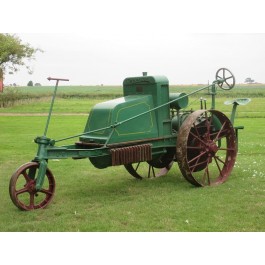Crawley Agri Motor
Description
Crawley Agri Motor
The Agrimotor was the brainchild of Albert Edward Crawley, who came up with the concept of a motor plough after leaving school at the age of 14 in 1906. Two years later, he and his brother, Arthur, who farmed at Hadstock, near Saffron Walden in Essex, built a working prototype. In 1913, an agreement was reached for Garretts of Leiston to manufacture the Agrimotor at its Suffolk factory. The following year, patents were assigned to Albert Crawley. The early motor ploughs had a fairly conventional layout with the radiator mounted in front of the engine. Despite being exhibited at various venues, including the 1914 Royal Show at Shrewsbury, just three were made at Leiston. The Crawley brothers then established their own manufacturing facilities at the Tower Works in Saffron Walden, where production continued until about 1924. The Agrimotor was successfully demonstrated at the 1920 Lincoln Tractor Trials, and machines were exported as far afield as Egypt and Australia. Later machines had the radiator mid-mounted between the engine and the transmission, which gave two forward speeds and a single reverse. Fins on the flywheel drew air through the radiator. The power units were American in origin, and were either Buda or Rutenber motors - probably war-surplus truck engines - converted to run on paraffin after starting on petrol. The standard-type Agrimotor was supplied as a three-furrow motor plough with Ransomes soil-wearing parts. It was also available with a one-way plough. An attachment was available with a front wheel and rear driver's platform to turn the machine into a three-wheel tractor.



